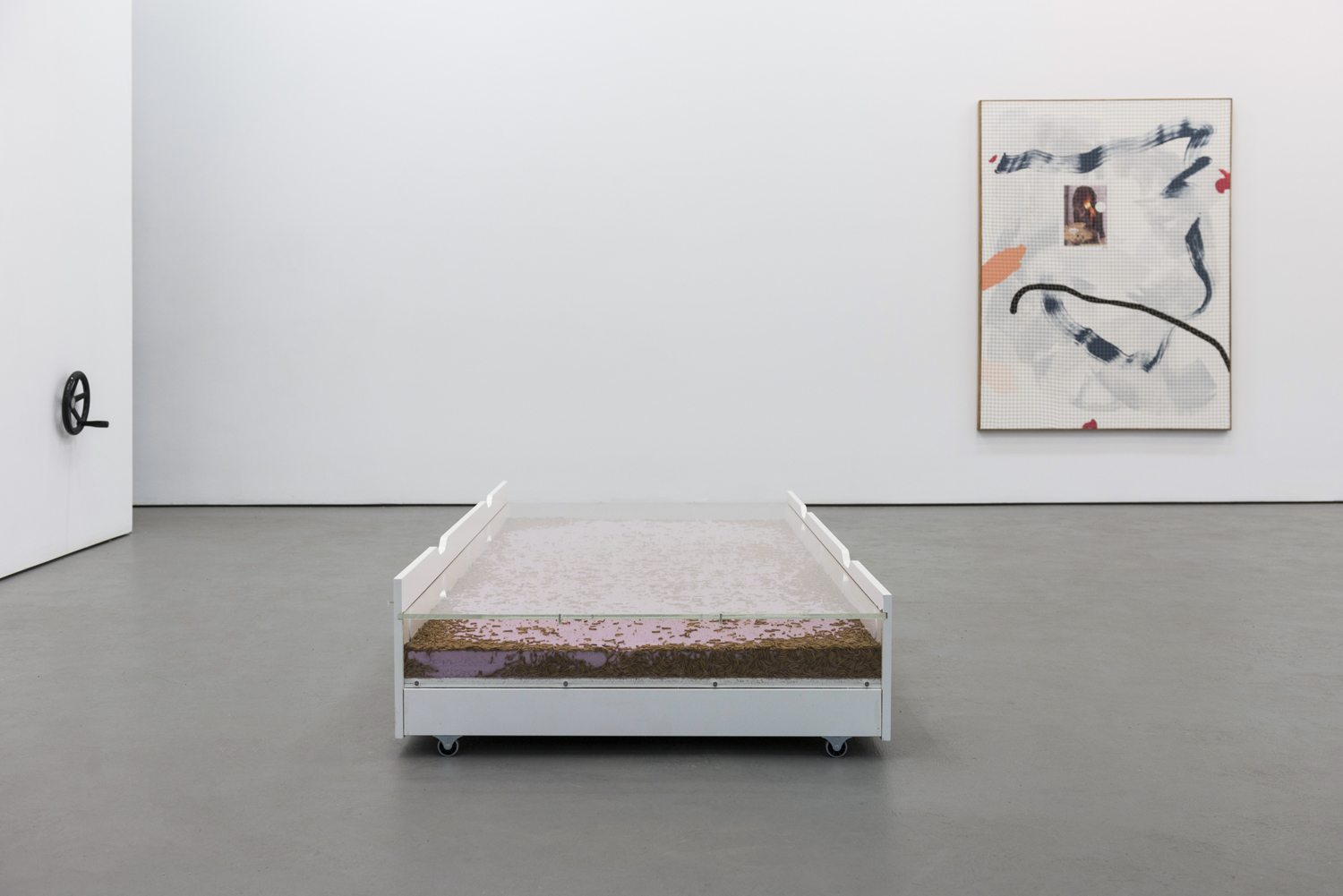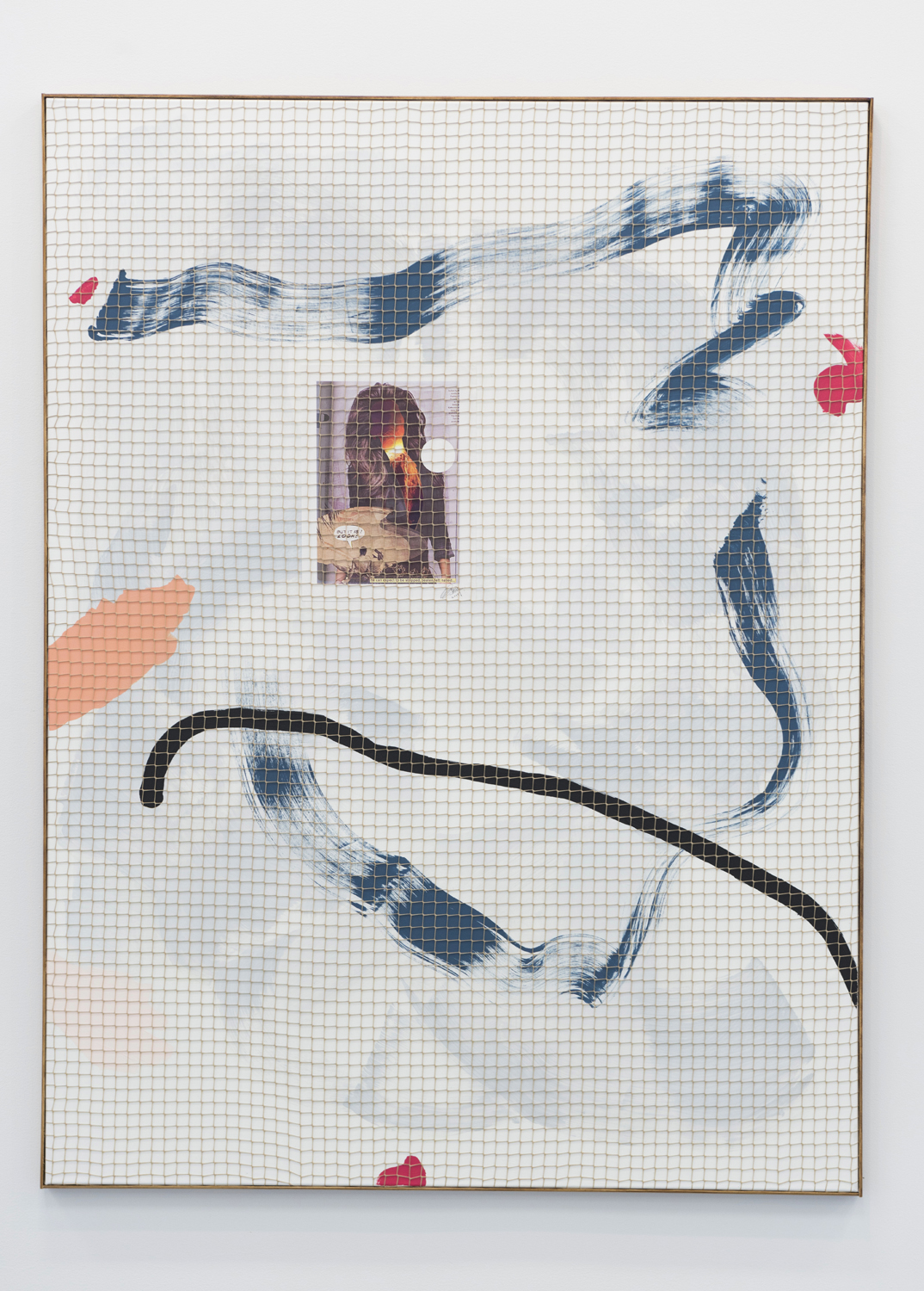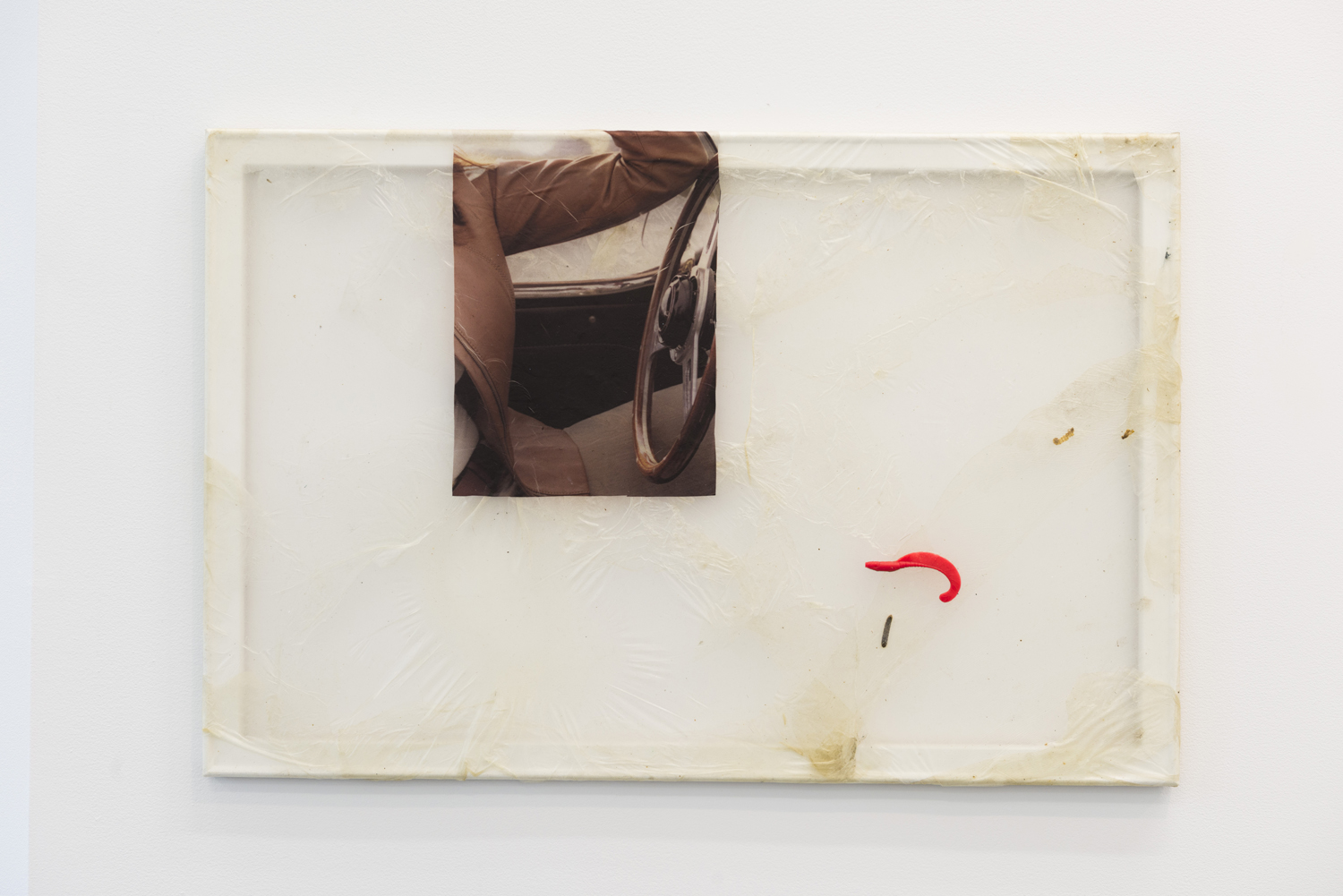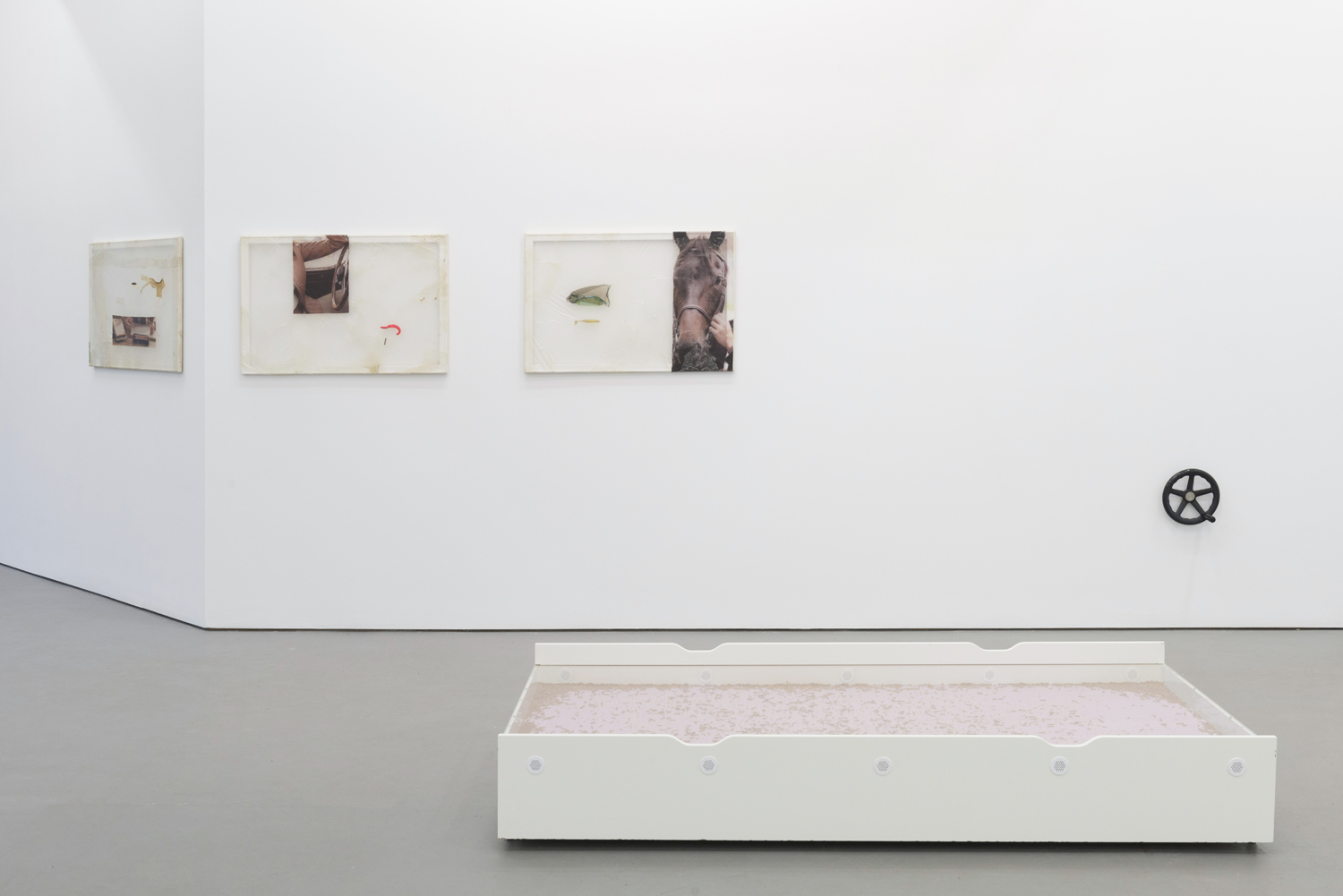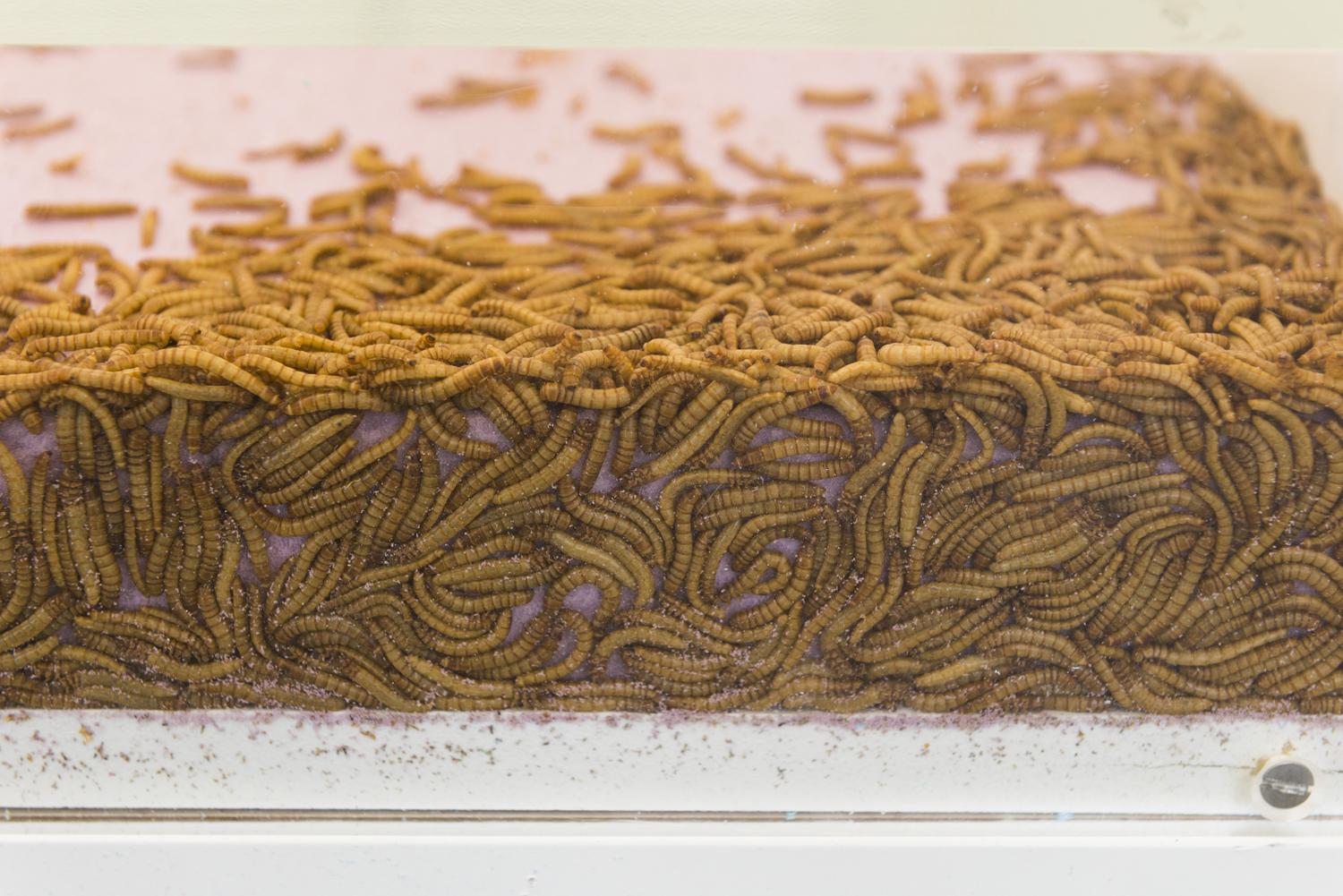Our Thing, 2018, exhibition view, Galerie Antoine Ertaskiran, Montreal (Canada)
Aude Pariset, Jon Rafman, Christopher Kulendran Thomas 22 feb.— 24 mar. 2018
24
mar.
2018
OPENING
Thursday February 22, from 5 to 8pm
Galerie Antoine Ertaskiran is pleased to present the first instalment of a two-part collaboration with Montreal-based project space Vie d’ange. Our Thing brings together works from Aude Pariset, Jon Rafman and Christopher Kulendran Thomas which converge as visualized meditations on the crowd. Through three seemingly disparate ecologies, the artists express ways of navigation and survival within modern confines while imagining the organizational means of transcending them. The French psychotherapist Félix Guattari identifies the interdependence of ‘the environmental’, ‘the social’ and ‘the psychological’ as realms of human concern which must cooperate and warns us that at our current disequilibrium: ..there is at least a risk that there will be no more human history unless humanity undertakes a radical reconsideration of itself [1]. Our Thing brings three different readings of our modern society into dialog while illuminating the complexities of their interdependence. The exhibition surveys the cognitive dissonance between our individual ethical aspirations and our collective group behaviour.
In Jon Rafman’s Poor Magic the existential anxiety of the individual is rendered palpable amongst the crowd. Through a first-person script assembled from confessional posts found on internet forums, Rafman creates an anonymous protagonist who, despite being one amongst many, is able to induce an empathetic attachment. Animated in synchronized groups, the crowds make a panicked, individualistic attempt at evacuation, or alternatively march in formation towards certain failure. Crowd simulation software is traditionally used to predict how people might behave in a crisis, yet Poor Magic allows us to reflect on the algorithmic transformations of society and how technologies are influencing the ways bodies move and shaping the ways in which groups think.
In turn, Aude Pariset’s work explores human intervention upon non-human crowds. In Pariset’s Sweeping Bird series, images of deceased birds who have mistakenly ingested plastic debris instead of food are laser transferred upon changing pads for infants. As birds find themselves at one end of this inadvertent food chain, mealworms – by way of scientific discovery – have found a new role in anthropic ecology: to consume the most insidious residues of human consumption – styrofoam waste. Pariset’s sculpture will remain in the gallery across both this and the subsequent exhibition as these worms continue to transform it. Just as worms become collaborators in waste removal, Pariset redeploys them to the front lines of luxury commodity production. Mealworms are released onto the bioplastic surfaces upon which the artist has transferred images parsed from high-end lifestyle advertisements. Pariset’s work explores how supply chains inflict food chains as she speculates on an eco-capitalist dream that can at once continue circulating images of desire while consuming the detritus left in its wake.
Like the systems-thinking demonstrated in Pariset’s work, Christopher Kulendran Thomas’ ongoing project When Platitudes Become Form engages the networks and political economies of circulation. With a personal attention to the ensuing economic liberalization of Sri Lanka that occurred at the end of a violent 30-year civil war, Thomas’ work explores the territorializing tendencies of this economic order and its means of recuperating images and capital into its fortified domain. Thomas’ film 60 Million Americans Can’t Be Wrong outlines the story of this conflict, while imagining the emancipatory ways technology can propel us beyond the traditional boundaries of nation-states. The film also outlines that a concurrent frontier of this ongoing conflict is the emergence of the first Sri Lankan white cube style art galleries in 2009, where the proliferation of contemporary art in Sri Lanka has reflected a new spirit of prosperity while concealing the violence upon which that prosperity was founded. Thomas engages with this dislocation by intervening in these distributed networks of images and capital. Purchasing artworks by some of Sri Lanka’s foremost young contemporary artists, Thomas proceeds to radically recontextualize them for international circulation as elements within his own compositions, forcing a contradiction between the work’s materials along the geopolitical vectors that propel their circulation [2].
Our Thing is akin to a picture of a moving crowd in that it attempts to capture a still moment despite the fact that its subjects are in motion. A picture of a crowd is not to be confused with a definitive representation of a group, as many who are implicated are left out beyond the croppings of an images frame. To be continued…
– Eli Kerr & Daphné Boxer
For further information, please contact Anne Roger, [email protected] or +1 (514) 989-7886
The gallery and the artists would like to thank Daphné Boxer and Eli Kerr for their collaboration.
[1] The Three Ecologies, Félix Guattari. 1971.
[2] From Christopher Kulendran Thomas’ film 60 Million Americans can’t be wrong
Aude Pariset (b. 1983 in Versailles, France) lives and works in Berlin. Solo exhibitions include Greenhouses at Cell Project Space, London (2016), Crawler at Ginerva Gambino, Cologne (2015) and A bōAt[] A Promise, Kunstverein Nürnberg, Germany (2014). Selected group exhibitions in 2015 include Co-Workers at the Musée d’Art Moderne de la Ville de Paris (2015), Find Your Beach, curated by Christina Lehnert at the Gebert Stiftung für Kultur, Rapperswil (2015) and Inside China, curated by Jo-ey Tang, Palais de Tokyo and K11 Foundation, Hong Kong and Shanghai (2015).
Jon Rafman (b. 1981 in Montreal) lives and works in Montreal (Canada). He holds an MFA from the School of the Art Institute of Chicago (USA). His work has gained international exposure with his series The Nine Eyes of Google Street View. Rafman has exhibited at the New Museum (USA), Palais de Tokyo (France), Stedelijk Museum (Netherlands), Saatchi Gallery (UK), the Contemporary Art Museum of Saint-Louis (USA), the Museum of Contemporary Canadian Art of Toronto (MOCCA)(Canada) and the Musée d’art contemporain de Montréal (Canada). His work has been featured in prominent international group exhibitions, including K11 Art Shangai (2017), Sharjah Biennial (2017), Berlin Biennial 9 (2016) and Manifesta Biennial for European Art 11 (2016). Rafman’s work has been featured in Art in America, Modern Painters, Artforum, Frieze, and the New York Times. He was longlisted for the Sobey Art Award in 2014 and 2016 and finalist in 2015. Rafman was one of the nominees for the prestigious Future Generation Art Prize in 2014. He was the recipient of the Prix Pierre-Ayot in 2015.
Christopher Kulendran Thomas’ work has been included in the 7th Bi-City Biennale in Shenzhen (2017), the 11th Gwangju Biennale (2016), the 9th Berlin Biennale (2016), the 3rd Dhaka Art Summit (2016) and presented in exhibitions including “I was raised on the Internet”, Museum of Contemporary Art Chicago (2018), “New Eelam: Tensta”, Tensta konsthall, Stockholm (2017), “Christopher Kulendran Thomas”, New Galerie, Paris (2017), “Bread and Roses”, Museum of Modern Art in Warsaw (2016), “moving is in every direction”, Hamburger Bahnhof – Museum für Gegenwart, Berlin (2017), “Co-Workers: Network As Artist”, Musée d’Art Moderne de la Ville de Paris (2015) and “Art Turning Left: How Values Changed Making”, Tate Liverpool (2013).




